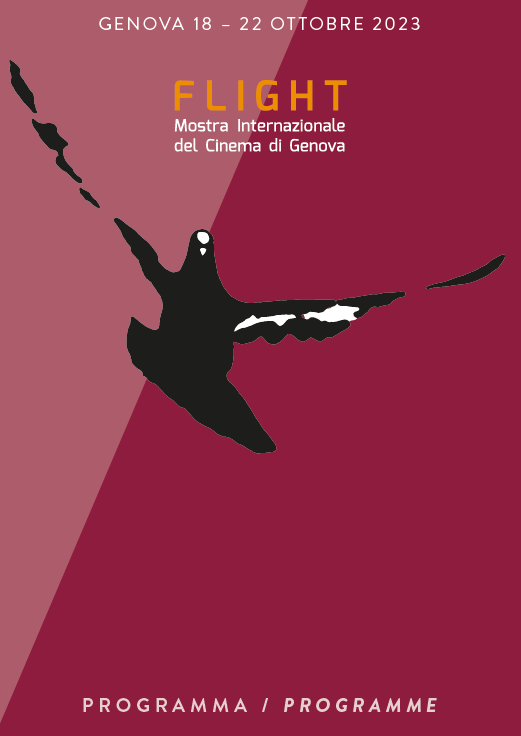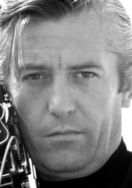PROGRAMMA/PROGRAM
AMORE IN ANTITESI
1967, B/N, sonoro su nastro magnetico audio separato (non ritrovato), 8mm, 16’:08’’.
Girato al Campo dei Fiori e al Sacro Monte di Varese. Antitesi tra l’“amore profano”di giovani coppie, e l’“amore sacro” di suore novizie. “L’essere umano ama per la vita. La vita prosegue per l’amore. Ora possiamo contrapporre l’amore esclusivo per Dio e l’amore per l’uomo. Questo contrasto viene messo in evidenza allo scopo di creare nello spettatore una reazione che varia a seconda dei SUOI concetti morali. Le riprese effettuate con teleobbiettivo hanno permesso che i personaggi si muovessero con la massima sponaneità. Il presente lavoro è un tentativo a raggiungere un nuovo linguaggio cinematografico” (Gianfranco Brebbia).
LOVE IN ANTITHESIS
1967, BW, sound on tape (lost), 8mm, 16’08’’.
Mostly filmed at Varese’s Sacro Monte. Nuns and young lovers present the contrast between Love Sacred and Profane.
“Human beings love life. Life continues because of love. The contrast between the exclusive love for God and the love for man is stressed with the purpose of creating a reaction in the spectator that varies depending on his or her moral attitudes. The use of telephoto lenses allowed the characters to move with the utmost spontaneity. The film is an attempt to attain a new cinematographic language." (Gianfranco Brebbia).
IDEA ASSURDA PER UN FILMAKER – ESTER
1969, colore, muto, S8, 11’ 51’’.
Sull’astuccio della pellicola Brebbia scrive: «SAITA– VEGETAZIONE / ELETTRICITÁ LUNA».
A un primo piano deformato della figlia Giovanna seguono immagini di un viso di donna via via più truccato e inquietante, infine sovrapposto a insetti e alla luna.
ABSURD IDEA FOR A FILMMAKER – ESTER
1969, color, silent, S8, 11’ 51’’.
Deformed images of Brebbia’s daughter Giovanna are followed by a portrait of a woman, Ester, who appears wearing more and more make-up, her hair disheveled and her aspect disturbing. Between her parted lips insects appear, then the moon is superimposed over her face.
IDEA ASSURDA PER UN FILMAKER – LUNA
1969, colore, muto, S8, 13’:20’’.
«2 bobine da proiettarsi in parallelo – 15’ più 15’ – l’uomo che avanza sino a raggiungere la luna e viceversa. Roccia Pila. Allunaggio TV. Sovrincisioni su pellicola nella parte finale» (G.B.).
La pellicola documenta l’allunaggio di Apollo 11, 20 luglio 1969. Il film inizia con riprese di rocce . Filtri colorati sull’obbiettivo rendono irreali le immagini di alberi spogli. Giochi di luce e colori e poi riprese dei suoi piedi nudi. La scena dell’uomo che scende sulla luna è sovrapposta a una margherita. Riprese del centro di Varese, una corsa automobilistica. Infine un’immagine della poesia di Brebbia Idea assurda per un filmaker stampatasu “La Prealpina”, 14 luglio 1969.
ABSURD IDEA FOR A FILMMAKER – LUNA
1969, color, silent, S8, 13'20''.
“2 film rolls to be projected in parallel – 15' plus 15' – Man advances until he reaches the moon and vice versa… Rocks. TV moon landing. Scratches on film in the final part" (GB).
The film documents the moon landing of Apollo 11, July 20, 1969. Shots of rocks. Colored filters on the lens lend unreality to bare trees. Plays of light and colors, then Brebbia’s bare feet in the grass. The scene of man touching the moon surface is superimposed with a daisy. The center of Varese, a car race. The film ends with Brebbia's poem, “Absurd Idea for a Filmmaker”, as printed by La Prealpina, 14 July 1969.
BAZAR
1973, colore, muto, S8, 03’:44’’
«film graffiato con effetti sensitivi» (G.B.)
Nella parte finale compaiono scene dei film di Sirio Luginbühl Crepacuore del 1969 e Amarsi a Marghera, “girato nel luglio 1970 in un deposito di scorie industriali di Marghera” (Sirio Luginbühl).
BAZAAR
1973, color, silent, S8, 03'44''
«scratched film with sensitive effects» (G.B.).
In the final part Brebbia uses material from Sirio Luginbühl's films Heartbreak (1969) and Loving in Marghera, "shot in July 1970 in a dump of industrial waste at Marghera” (Sirio Luginbühl).


